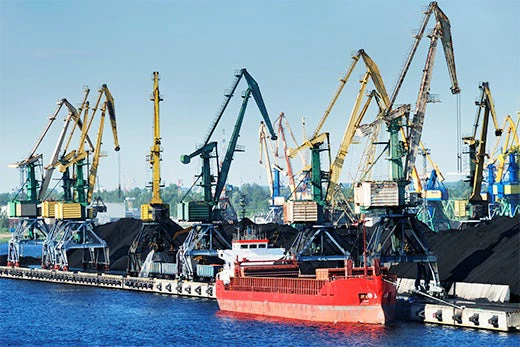
Back in March the Energy Sector Management Assistance Program (ESMAP) hosted an event here at the World Bank titled ‘Rethinking the Future of Energy’. One of our speakers was Duncan Clark, co-author of a recent book on energy and climate change. I came across Duncan while doing background research on the concept of supply-side constraints to fossil fuel extraction. It seems increasingly clear to me that demand-side climate change mitigation is always likely to be patchy in coverage (both within an economy, and between different countries), costly to implement due to the sheer number of point sources and transactions involved (and therefore regulations and policies required), and too psychologically distant from the real culprit: the fossil fuels we extract from the ground in ever-increasing quantities. Aside from a couple of vague references in the literature, Duncan is the first serious proponent for a supply-side approach to constraining carbon dioxide (CO2) emissions that I’ve come across.
Although we managed to secure many other interesting speakers for our event, including Amory Lovins from Rocky Mountain Institute, Duncan’s presentation features here because of the tricky questions it raises for the World Bank Group (WBG), our shareholders and our clients.
Here are my take-aways from Duncan’s presentation:
- We can only afford to burn around a third of the coal, gas and oil we have already discovered if we want to avoid runaway climate change (although even that isn’t guaranteed);
- Emissions continue to rise despite some countries’ attempts to constrain them; history tells us that we burn whatever we take out of the ground; promoting energy efficiency and renewable energy is all well and good, but it must be back-stopped by a firm cap on the carbon we emit into the atmosphere;
- We need to figure out a way to leave carbon in the ground, whereas currently all countries and politicians are doing exactly the opposite (promoting extraction while, sometimes half-heartedly, promoting ways to cut emissions);
- A supply-side constraint on carbon, applied to fossil fuel extractors, would probably be the simplest way to do this;
- This measure would expose the huge challenges facing us, including how to divide up the remaining pie, and how to deal with the inevitable adjustments to GDP;
- And finally, if we believe all this will eventually have to happen, then we need to urgently stop building fossil fuel infrastructure that will become obsolete if we have to write off two thirds of the world’s carbon assets.
However, it seems to me that the issue of extraction (and extraction infrastructure) should be considered separately from combustion (and combustion infrastructure). An equitable approach to dividing the carbon pie would likely see a large percentage of future extraction rights go to countries that have very low CO2 emissions and are in greatest need of the rents that these assets would generate. Partially borrowing from Norway’s example, such countries may choose to sell them on international markets rather than burn the fuels themselves, using the proceeds to help fund the low carbon infrastructure they will need to succeed in the carbon-constrained world of the future. Increasingly many countries are discovering that renewable energy and energy efficient urban development make economic sense in their own right. They’re also finding that technological and institutional innovations are driving a change in our thinking about electricity grids -- so that even those without fossil fuel reserves do not necessarily need to trade off low carbon development against poverty reduction.
But one thing is clear: an effective global cap on carbon would raise fossil fuel prices considerably. Does it therefore make sense to continue to invest in combustion infrastructure in any country without factoring in these potential future prices? Doing so amounts to a bet against the ability of humanity to deal with climate change, and against the likelihood of an eventual ‘tipping point’ in public opinion. Low income countries could optimistically assume that they will be compensated for the increased costs of burning fossil fuels, but this is a risky assumption considering the already high demands on ‘climate finance’. For the highly industrialized countries, new investments in fossil fuel extraction and combustion infrastructure would seem to contradict any notion of serious action on climate change, and create a potential credibility problem when it comes to promoting emissions cuts internationally. As a recent report for the United Nations makes clear, switching from coal to gas is not in itself a solution, unless carbon capture and storage is deployed on a large scale.
Finally there is the issue of stranded physical assets and the likely write off of proven carbon assets, both of which are represented in the capital balance sheets of national governments and the share price valuations of large corporations. Thanks to the work of the Carbon Tracker Initiative and others there is increasing discussion on how we value carbon extraction companies, and the financial and ethical implications of investing in them. However, there is clearly a need to apply some of the same analysis to nation states, and consider their exposure risk to a write off and positive opportunities for national divestment. As with technological obsolescence, losers can easily become winners when they are willing to acknowledge and respond to the writing on the wall.


Join the Conversation